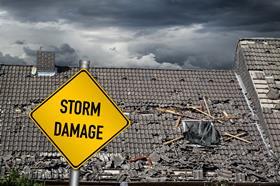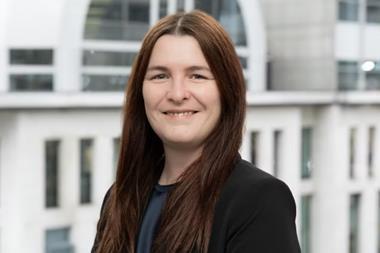Businesses in the East Midlands are the most worried about flooding
More than a third (36%) of UK businesses agree it is difficult to get affordable flood cover for commercial properties, according to the latest report by FloodFlash.
On 1 March 2022, the parametric insurance insurtech published The FloodFlash Commercial Risk Report 2022, which revealed that only 42% of the British companies polled have business interruption insurance in place, despite the fact that commercial properties in the UK are two times more likely to flood than the average British property.
The report looked at British businesses based on data from Ordnance Survey, environmental consultants Jeremy Benn Associates (JBA) and the Environment Agency, it surveyed 500 financial decision-makers at UK companies as well as 200 insurance brokers on flood risk.
Meanwhile, Greater London had the highest number of commercial properties (41,946) situated in a moderate flood risk zone, where buildings are at risk of flooding once every 200 years. West Yorkshire had 10,396 commercial properties located in a moderate flood risk zone, while Greater Manchester had 10,011.
FloodFlash commercial director Brent Jackson said: “The risks that British businesses face are becoming more severe thanks to urbanisation, increased frequency of extreme weather and climate change.
“It’s important not to use individual weather events as evidence of macro trends, but the fact that we’re releasing this report at a time [when] the nation is recovering from three named storms is not lost on us.”
This includes Storms Dudley, Eunice and Franklin, which hit the UK in February 2022. During these storm events, FloodFlash managed to pay one client’s claim in five hours and 36 minutes, breaking its previous record of nine hours and 44 minutes, set during Storm Christoph in 2021.
Mitigating risk
FloodFlash defined a significant flood risk as being when a property is in a 75-year zone. This means that properties in this locale are likely to flood once every 75 years. A moderate flood risk is when buildings are likely to flood once every 200 years, while properties that have a low flood risk are in a 1,000-year zone.
Jackson explained: “It’s so important that British businesses and their brokers understand the risks that they are facing. [Around] 236,121 commercial properties are in the one in 75-year zone. If you consider that risk throughout a 25-year occupancy, the chance of them flooding in that time is roughly one in three.
“That’s a huge chance that a business will incur catastrophic losses and one that we must work together to mitigate, whether that’s through insurance or flood resilience measures.”

Five counties in Britain have more than 30% of commercial properties within a 200-year flood zone.
This includes East Riding of Yorkshire (37%), Merthyr Tydfil (36%), Neath Port Talbot (34%), Newport (32%) and Conwy (31%).
The areas with the lowest proportion of commercial properties at risk of flooding are Midlothian (7%) and Aberdeenshire (9%).
FloodFlash’s report further revealed that 75% of businesses in the East Midlands are worried about flooding.
Two-thirds (66%) of businesses in London and Scotland respectively are also worried about flooding, compared to 63% of companies both in the north west and south east and 61% of firms in Yorkshire and the Humber.
In addition, 69% of the businesses surveyed by FloodFlash were concerned about the impact flooding might have on their commercial partners and supply chain.
Risk awareness
Ian Bartholomew, FloodFlash’s chief science officer, said: “The past 12 months have been characterised by great challenges and opportunities in the struggle to make the world more resilient to extreme weather.
“Devastating flooding across Europe and Asia was matched by the widespread wildfires in the US. With a backdrop of huge losses, world leaders met to renew a global ambition on climate change at COP26 in Glasgow.”
Approximately 75% of British businesses are aware of flood risk, according to the report, however FloodFlash’s data suggests there is a discrepancy between actual and perceived risk, flagging underinsurance concerns.
Bartholomew added: “We aim to help more people recover from catastrophe using parametric insurance. The first step is to help those at risk understand their exposure and what they can do about it.”
Hosted by comedian and actor Tom Allen, 34 Gold, 23 Silver and 22 Bronze awards were handed out across an amazing 34 categories recognising brilliance and innovation right across the breadth of UK general insurance.








































![clapping ]](https://d17mj6xr9uykrr.cloudfront.net/Pictures/380x253/5/9/6/90596_clapping_805716.jpg)











No comments yet